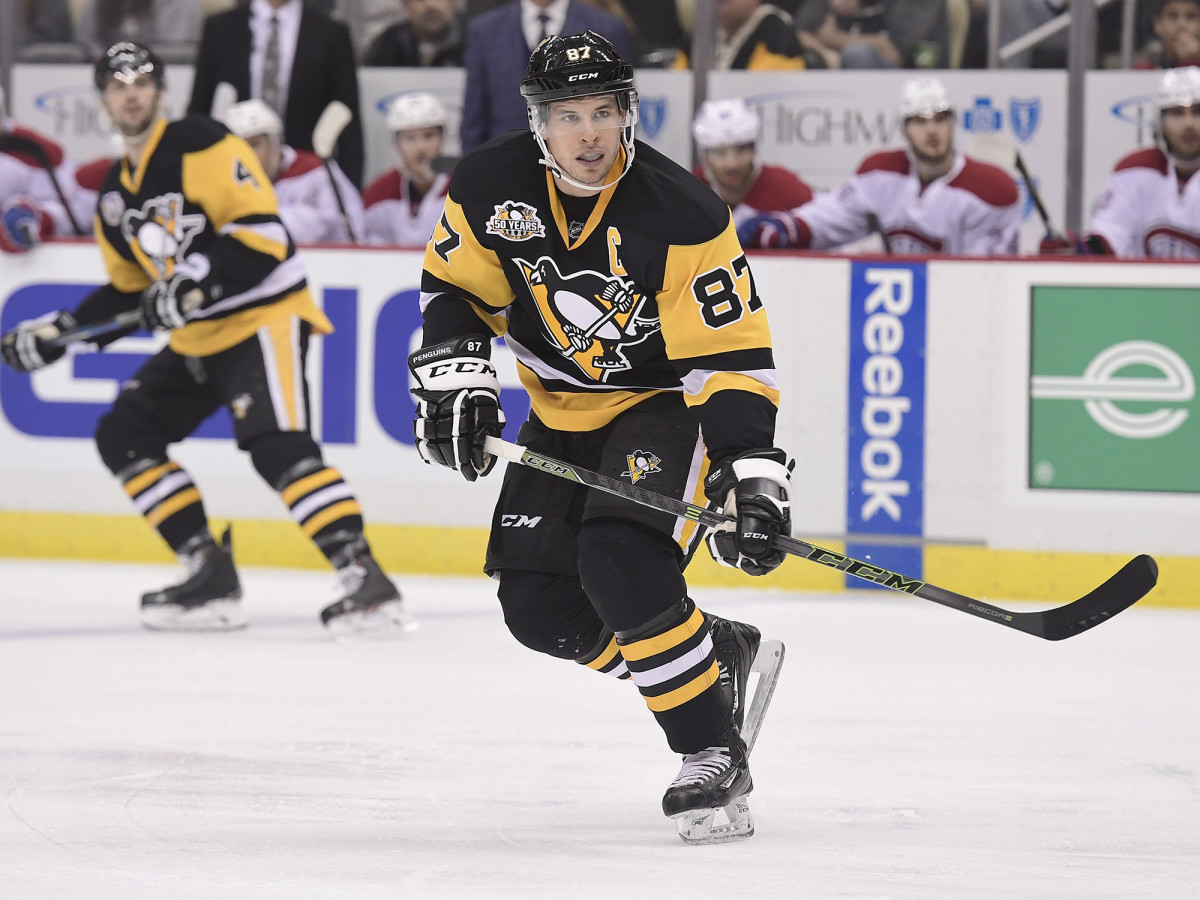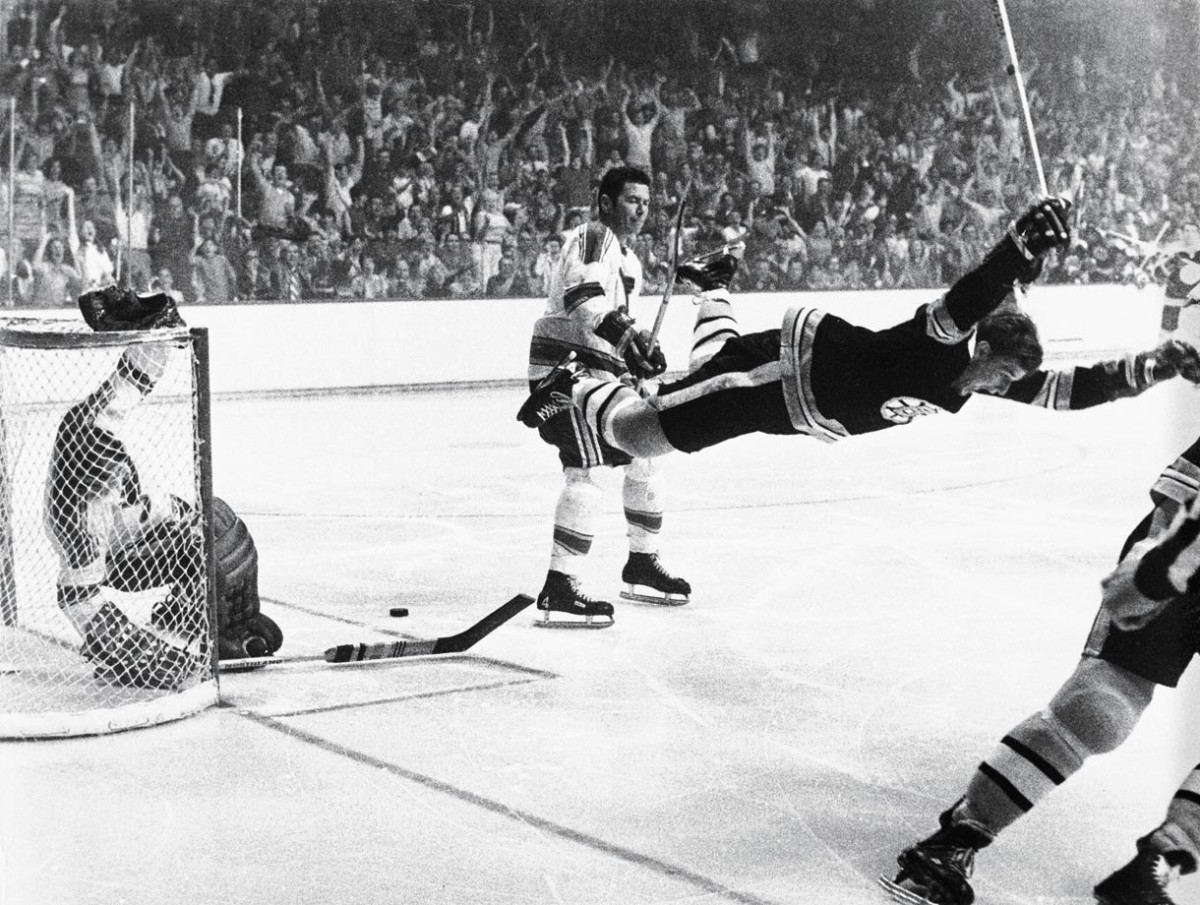NHL 100: Celebrating 100 years of hockey's greatest players, moments and more

On Nov. 26, 1917, at the peak of World War I, as Allied forces tried to seize the German stronghold at Bourlon Wood, near the northern French city of Cambrai, a group of gentlemen convened in a grand, gilded dining room in Montreal. They gathered at the Windsor hotel, on rue Peel, to lay the foundation for the National Hockey League.
It was impossible to know then that the fledgling four-team league, which opened its inaugural season three weeks later, would grow to encompass 30 (soon-to-be 31) teams in two countries, thousands of players and countless moments that stirred millions of fans around the world. It was impossible to know the game, born on frozen lakes in the north, would one day capture the hearts and inspire the dreams of youngsters in Florida, in Texas, in Arizona.
An examination of the 100-year history of the NHL is a study of evolution. There is the physical change, of course. The league’s first star, Canadiens center Joe Malone, stood 5’10” and a modest 150 pounds; Penguins captain Sidney Crosby, who is not much taller at 5’11”, weighs in at 200. Those physical developments have of course affected the game—the speed, the tenacity, the athleticism. When a rookie Alex Ovechkin picks up the puck from center ice and carries it down the right wing with speed, cuts across and drags around a 6’ 4”, 212-pound defenseman, falls and somehow scores from his back with a one-handed swoop of his stick, that is the quintessentially modern NHL goal.
The Future of Hockey: How the game looks now and how it is evolving
Along with the physical, advancements in technology have left an imprint as well. Wooden sticks with flat blades have given way to composites with banana curves that let players slingshot pucks with incredible velocity with just a snap of the wrist. Slapshots that approach triple-digit speeds are as real as the welts they’ll leave on a shot-blocking defenseman’s leg. Goalie pads have gotten considerably lighter, and consequently larger, a boon for netminders but no help in the NHL’s contemporary quest for more goals. Technology has even changed the way the game is coached. In 1972, Flyers coach Fred Shero hired Mike Nykoluk as the league’s first full-time assistant; 44 years later, most bench bosses have a staff of at least five, including strength coaches, video coordinators and analytics experts.

And all these changes to the game and to the league have inevitably revolutionized the way we watch hockey, the way we are fans. We can stream games live on a 5-inch screen on a crowded bus headed to Columbus. We can find the success rate of shots from any square foot area on the ice. We can calculate a goalie’s save percentage in a 5-on-3 penalty kill situation in day games on the road in March, and we can prescribe meaning to such a fact if it bolstered our point in a fiery debate on Twitter.
Sports Illustrated's 10 greatest hockey stories
But while the league has indeed moved figuratively and literally over the last 100 years, it hasn’t always been quick to embrace change, notably holding onto a senseless tradition of violence and largely lacking diversity in its highest ranks. There are, however, old conventions that hockey fiercely clings onto, ones that remind us of what is good in sport—the handshake line at the end of every playoff series, the invariable disregard of the individual over the team, the virtue of sacrifice and the fact that the first hands that lift the Stanley Cup after a championship don’t belong to an owner or a coach but to a player—the captain.

On this, the eve of the NHL’s centennial anniversary, we celebrate not only where the game has been but also where it will go. Over the next several months on this site, SI will look back on the great history of the league—reliving the 17 most iconic moments—and our own relationship to it—opening the SI Vault to bring you our 10 definitive NHL stories. We will rank teams, players, games—perhaps even mullets. We’ll bring you inside the many highs (2017 Stanley Cup coverage) and some of the memorable lows (See: Washington Capitals, 1974-75). We’ll remember how Guy Lefleur flew, how Bobby Orr soared, how the Flyers brawled and one young man from Brantford, Ont., changed it all. We’ll recall the unforgettable moments—the Super Series, the Miracle at Manchester, the Easter Epic—as we all watch in anticipation for the next player, the next game, the next goal to join the canon of hockey lore.
To the NHL, we say, happy birthday; 100 looks good on you.
